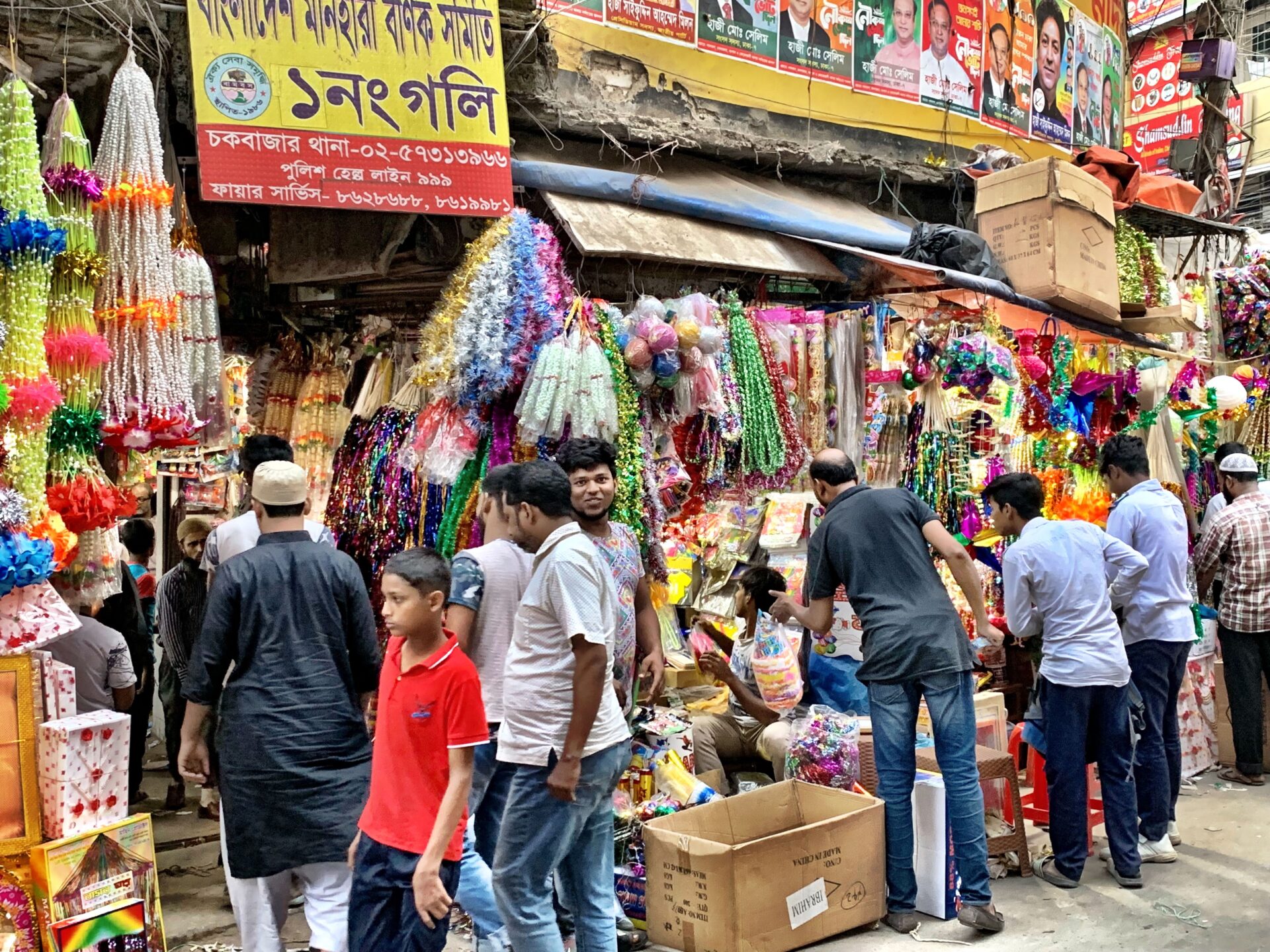I’ve been shopping today. It’s my final day in Ethiopia and I’ve been buying everything from refrigerator magnets to an Amharic Bible that looks like a prop from an Indiana Jones film. As I have been popping in and out of various shops, I’ve seen a handful of inexperienced tourists attempting to buy souvenirs. It’s sometimes painful for me to see fellow countrymen failing to understand how to shop in a country that has a different set of rules than what they’re used to. Often tourists will pay too much, get angry or treat the shop owners condescendingly if they don’t get what they want. Shopping can be a fun experience if you remember a few things.
Price= Cost + Profit. Unfortunately we don’t really know what anything REALLY costs the seller, so that’s an unknown. What we do know is that no one is selling stuff to lose money, so it’s doubtful that such a thing is going to happen unless the merchant is really strapped for cash. It’s reasonable to expect the seller to make a profit. By the same token, we don’t want to be stupid and pay the first price given (which I see people do all the time). It might seem like a pittance to you, but it affects future buyers and doesn’t reflect well on you in a culture where bargaining is the norm. Just because you’re visiting from another country doesn’t mean you should pay more than everyone else. Almost every time I buy a conspicuous item, locals will ask me what I paid. If I tell them a high price, they know that I’m an easy target to take to their “cousin’s shop” or that I’m a dumb tourist. Here’s a few tips to help you get the best prices and be a responsible traveler:
1. Scan the market and ask the price in several shops- before you ever pull your wallet out, walk through the market and find the items you’re interested in buying. Resist the urge to negotiate. Just ask the price and tell them you might be back. If the price is too high, it might get lowered as you walk out the door. Remember the location of the vendor with the lowest price as you ask at several shops. If the prices are uniform, there may not be a significant amount of tourist gouging. Maybe they’re in cahoots with each other, but usually it’s every man for himself.
2. Know the formula– this percentage is not true everywhere, but a good rule of thumb is to cut the price in half and add 10-20%. That’s been the markup in most countries I’ve visited. The more aggressive the vendor, the higher the markup oftentimes. I have seen prices inflated 4 or 5 times what the price should be. Asking another tourist what they paid for an item might help if they’re an experienced shopper.
3. Make sure you want the item– its bad form to begin a negotiation when you’re not serious about buying, so make certain the item is what you want, the quality is acceptable, and you’re specific about the piece being discussed. There might be different sizes of the item, different levels of workmanship or other factors to be considered. Once the bargaining has begun and the dealer has agreed on a price you suggested, the deal is done.
4. Get a discount before you start bargaining– the seller has no idea if you know what something is supposed to cost and that is where the game begins. If you ask them for “discount price” or “best price” after they’ve quoted you, you’ll see immediately how flexible they are. If they try to group several items together, you’ll know that they’re more concerned about gross sales than profit percentage. Often this simple question can knock off 10-20% from the price before haggling.
5. Have the seller invest in you (when you’re ready to buy)- if you just walk in a shop, ask a price, and then leave, the store owner has no time invested in you. If you’ve been asking questions and spent some time in the shop, the owner will usually work on trying to find something you like. Even if you’ve left and come back three times, they’ll know that you mean business and a sale is probable. Once they’ve spent some time with you, they’ll be more likely to work a deal just to make it worth their time.
6. Start really low- Let’s say the seller asks 100. You’re guessing they might settle for 60 using the handy dandy formula provided. So you start with half of the price you think you’re going to get, which would be 30. That may seem ridiculous, but it gives them a chance to counter with 80, you say 40, they say 75… finally you agree on 60. They might even say yes in 30. You never know. If they laugh, you’re usually on the right track. If it’s completely unacceptable they’ll just say no. Laughing means you’re getting close.
7. Don’t act superior–being condescending will seldom get you anywhere and will certainly not help negotiations. Treating everyone nice and keeping a smile on your face is not a sign of weakness, but puts you in a position of power. Never get angry. It’s just a game after all. You probably don’t REALLY need what you’re shopping for. Don’t take that refrigerator magnet too seriously. Smile.
8. Act only slightly interested–. The less committed you are about an item, the less value it has on the bargaining table. Supply and demand are in full play and if the demand is low, the price goes down. If you don’t need it, well maybe the owner can persuade you with a cheap price to help you overcome the sticking point that you don’t want it.
9.Use their Cheesy lines against them– I can’t tell you how many shops I’ve been where I’ve been told I’m “like a brother” or “I give good friend discount”. Those lines work great when you reverse them. Looking sad and forlorn because your “brother” is unwilling to help you with a good price usually amuses the more clever ones. This is particularly effective with Turkish carpet and Moroccan leather salespeople.
10. Beware of Perks– Did someone just bring you a coke, offer you a free foot massage, give you a product sample or share tea with you? Did you get a free taxi ride? Remember the TINSTAFL principle. There is no such thing as a free lunch. The bigger the perk, the higher the profit margin. Free factory tours are ALWAYS designed to sell you a product and no one is going to spend time teaching you something if there’s nothing in it for them. If you know that going in, you’ll be in a better position to bargain or say no.
11. Add customer value– if there’s a chance you’ll buy more items from the seller later, recommend them on Trip Advisor, or write about your wonderful experience on your travel blog, some forward thinking vendors might find value in that. You might even find yourself as the recipient of a gift to remind you about how fantastic they are. Don’t be dishonest, but let them know if you appreciate them and want to spread the word.
12.Beware the middleman– The men who approach you and want to show you their shop or their family’s shop are often hustlers who’s only job is to get you to a store where you’ll have to pay a higher price in order for them to get their commission. If you suspect this to be the case, politely thank them for showing you the store and tell them goodbye. Chances are they’ll want to stay until you pay (to get their commission) or until you leave. Another obvious clue is that the conversation between the tout and vendor will no longer be in English so you can’t understand. If you do leave, they’ll probably want to show you the shop of another “relative”. It’s best to ditch these “helpers” because you’ll almost certainly pay more. Even hired tour guides often engage in these practices. You might think they’re helping you when they stop at a factory or “help” negotiate a price or translate, but they’re more than likely getting a kickback as soon as you turn around.
13. Keep a separate shopping wallet– nothing says “take advantage of me” like a big wallet bursting with cash. I keep a small amount of local money in a separate wallet. Everyone knows I probably have more money stashed somewhere, but sometimes having just 20 in your wallet when the price is 25, can clinch the sale.
14. Group items together– get the lowest price on each item, add the proposed total and then start haggling as if it were one item. It’s technically a new negotiation with the added value that you’ve already gotten the lowest price for the single item, but buying more things reopens the bartering. If there’s a language barrier, open the calculator app on your phone and start the bidding. There’s usually less of a markup if there’s just one price for everything. The vendor might just be looking at the bottom line and a combined sale will be less trouble for them and an easier way to make a few bucks and clear out some inventory. At any rate, you won’t have to repeat the process a dozen times and that’s a good thing.
15.One Last Thing– if you’re in a stalemate, grab some little item like a refrigerator magnet or little wood carving and agree to their price if they throw that in. It’s not going to affect their profit much and you’ll feel like you won the game, even if you didn’t.
Good luck! Go get em!






Leave a reply
You must be logged in to post a comment.